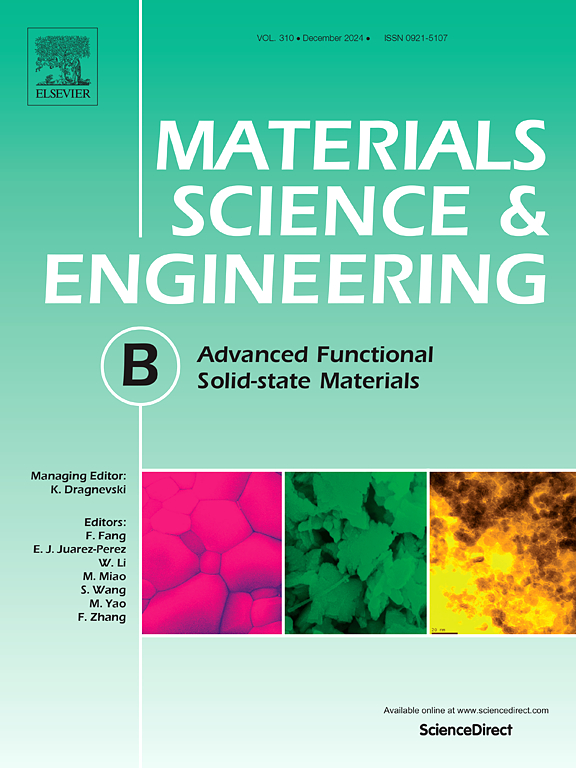Molecular engineering of PMMA-based quasi-solid-state electrolytes for dye-sensitized solar cells: Tailoring ion conductivity and thermal stability through salt-ratio modulation
IF 3.9
3区 材料科学
Q2 MATERIALS SCIENCE, MULTIDISCIPLINARY
引用次数: 0
Abstract
This study investigated the potential of polymer gel electrolytes (PGE) as a replacement for conventional liquid electrolytes in dye-sensitized solar cells (DSSCs) to enhance efficiency, stability, and long-term performance. Polymethyl methacrylate (PMMA) was utilized as the base polymer to improve the mechanical integrity of the gel electrolyte, while ammonium iodide salt was incorporated to enhance ionic conductivity. A comprehensive set of characterization techniques was employed: Scanning electron microscopy (SEM) provided detailed analysis of the surface morphology and uniformity of the electrolyte, X-ray diffraction (XRD) examined the crystalline structure and phase composition, thermal gravimetric analysis (TGA) evaluated the thermal stability, and electrochemical impedance spectroscopy (EIS) quantified the ionic conductivity. The results demonstrated that salt concentration significantly affected ionic conductivity, which in turn impacted the electrochemical performance of the DSSC. The optimized PGE achieved an energy conversion efficiency of 4.68%, with improved long-term stability compared to traditional liquid electrolytes, which exhibited an efficiency of 6.03%. However, the longevity of traditional liquid electrolyte-based DSSCs was significantly lower compared to PGE-based DSSCs. This work establishes PMMA-based PGEs as a viable alternative to liquid electrolytes, offering superior ionic conductivity, enhanced DSSC performance, greater durability, and extended longevity, positioning them for advanced renewable energy applications.
求助全文
约1分钟内获得全文
求助全文
来源期刊

Materials Science and Engineering: B
工程技术-材料科学:综合
CiteScore
5.60
自引率
2.80%
发文量
481
审稿时长
3.5 months
期刊介绍:
The journal provides an international medium for the publication of theoretical and experimental studies and reviews related to the electronic, electrochemical, ionic, magnetic, optical, and biosensing properties of solid state materials in bulk, thin film and particulate forms. Papers dealing with synthesis, processing, characterization, structure, physical properties and computational aspects of nano-crystalline, crystalline, amorphous and glassy forms of ceramics, semiconductors, layered insertion compounds, low-dimensional compounds and systems, fast-ion conductors, polymers and dielectrics are viewed as suitable for publication. Articles focused on nano-structured aspects of these advanced solid-state materials will also be considered suitable.
 求助内容:
求助内容: 应助结果提醒方式:
应助结果提醒方式:


